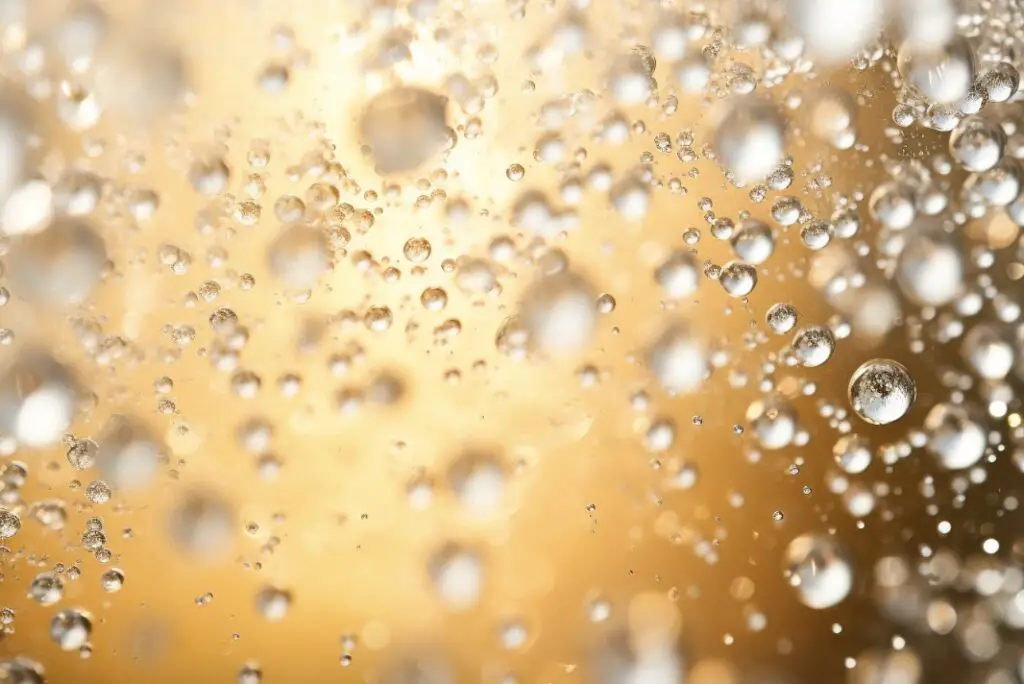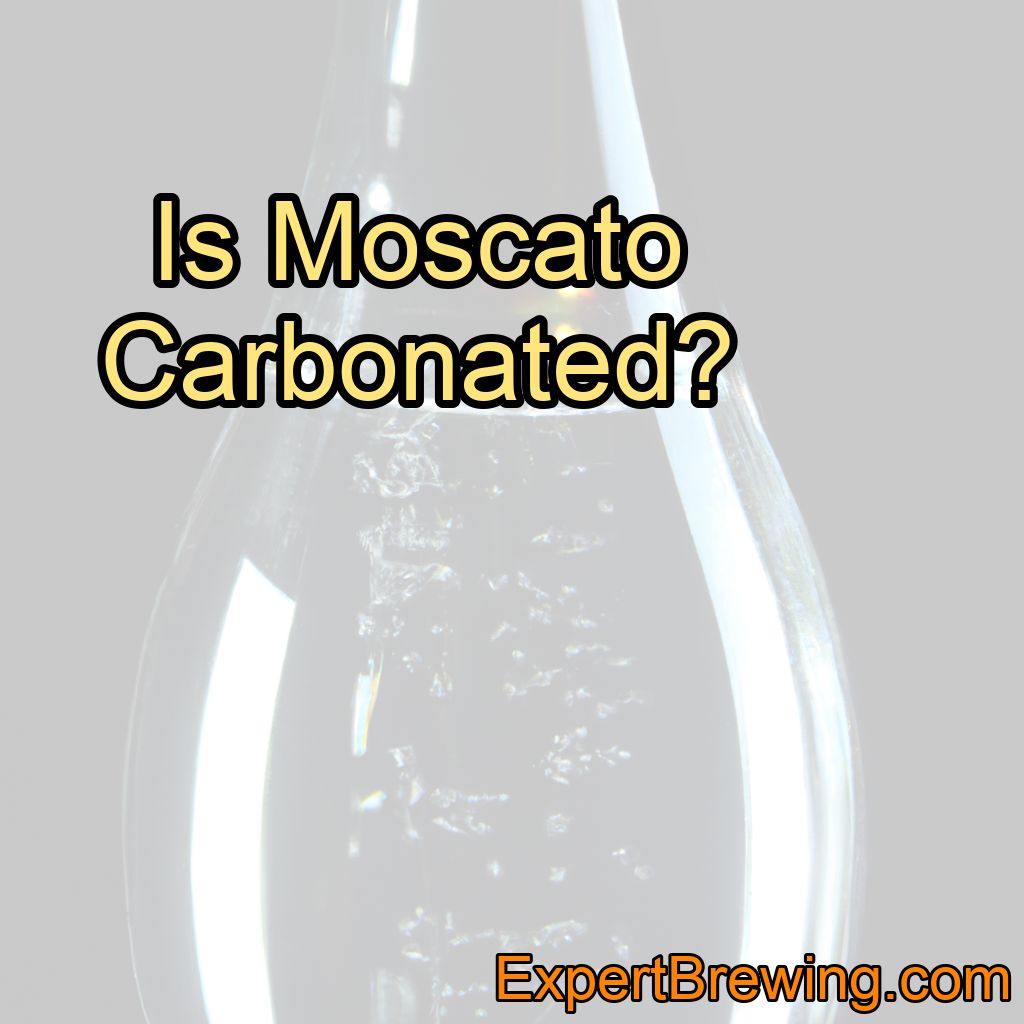Moscato wine has been a fan favorite for many people, especially those who prefer a sweeter wine option.
But, is Moscato carbonated? The answer is yes, Moscato is a carbonated wine.
However, the level of carbonation can vary depending on the type of Moscato wine. In this blog post, I will dive into the world of Moscato wine, discussing its origins, various types, and the reasons behind its carbonation. Let’s get started!
The Origins of Moscato Wine
Moscato wine has its roots in the Piedmont region of Italy. It is made from the Muscat grape, which is one of the oldest grape varieties in the world.

The Muscat grape is known for its sweet and fruity aroma, making it a popular choice for wine production. Moscato wine has been enjoyed for centuries, dating back to the Roman Empire.
Types of Moscato Wine
There are several different types of Moscato wine, each with varying levels of carbonation and sweetness. Some of the most popular types of Moscato include:
1. Moscato d’Asti: This is a sweet and lightly sparkling wine made in the Asti region of Italy. It has a low alcohol content, usually around 5-6%.
2. Asti Spumante: Also made in the Asti region, this wine has a higher level of carbonation and is considered a fully sparkling wine. It has a slightly higher alcohol content, around 7-9%.
3. Pink Moscato: This is a rosé version of Moscato, made by combining red and white Muscat grapes. It has a similar level of carbonation to Moscato d’Asti.
4. Still Moscato: This type of Moscato is not carbonated and is less common than its sparkling counterparts.
Why is Moscato Carbonated?
The carbonation in Moscato wine is a result of the fermentation process. During fermentation, yeast converts sugar in the grape juice into alcohol and carbon dioxide.

In most wines, the carbon dioxide is allowed to escape, resulting in a still wine. However, in Moscato wines, the carbon dioxide is trapped in the wine, creating the signature bubbles and fizz.
The Charmat Method
Moscato wines are often produced using the Charmat method of fermentation. This method involves a secondary fermentation in a closed tank, which allows the carbon dioxide produced during fermentation to remain in the wine.

The Charmat method is a cheaper and quicker way to produce sparkling wine compared to the traditional méthode champenoise, which requires a secondary fermentation in the bottle.
Pairing Moscato with Food
Moscato’s sweet and fruity flavors make it an excellent wine to pair with a variety of foods, particularly desserts. Some popular pairings for Moscato wine include:
– Fruit-based desserts: The fruity notes in Moscato complement fruit-based desserts, such as fruit tarts, cobblers, and sorbets.
– Spicy dishes: The sweetness of Moscato can help tame the heat in spicy dishes like Thai and Indian cuisine.
– Cheese: Moscato pairs well with soft, creamy cheeses like Brie and Camembert, as well as tangy, aged cheeses like Gorgonzola and Roquefort.

The Popularity of Moscato
In recent years, Moscato has experienced a surge in popularity, particularly in the United States. This can be attributed to a few factors:
1. Sweetness: Moscato’s sweet and fruity flavors make it an approachable option for those who are new to wine or prefer sweeter drinks.
2. Low alcohol content: With alcohol levels typically under 10%, Moscato is an easy-drinking wine that’s perfect for sipping on a warm summer day or during a casual gathering.
3. Celebrity endorsements: Several celebrities, including rapper Drake and reality TV star Bethenny Frankel, have publicly expressed their love for Moscato, which has undoubtedly contributed to its rise in popularity.
Conclusion
In conclusion, Moscato is indeed a carbonated wine, with its bubbles resulting from the fermentation process. The level of carbonation can vary depending on the specific type of Moscato. Its sweet and fruity flavors, low alcohol content, and versatility in food pairings have contributed to its popularity, particularly among those who are new to wine or prefer a sweeter option. So, the next time you’re looking for a refreshing and bubbly wine, give Moscato a try!
10 Fun Facts About Moscato Wine
1. Moscato is a carbonated wine.
2. It is made from the Muscat grape, one of the oldest grape varieties in the world.
3. Moscato originated in the Piedmont region of Italy.
4. There are several types of Moscato, including Moscato d’Asti, Asti Spumante, Pink Moscato, and still Moscato.
5. The carbonation in Moscato is a result of the fermentation process.
6. Moscato wines are often produced using the Charmat method of fermentation.
7. Moscato pairs well with fruit-based desserts, spicy dishes, and cheese.
8. Moscato has experienced a surge in popularity in recent years, particularly in the United States.
9. Its sweetness and low alcohol content make it an approachable option for those new to wine or who prefer sweeter drinks.
10. Celebrity endorsements have contributed to Moscato’s rise in popularity.
FAQs
Does Moscato d Asti have carbonation?
Yes, Moscato d’Asti is a lightly sparkling wine that has a natural effervescence.
What Moscato is carbonated?
There are several varieties of Moscato that can be carbonated, including Moscato d’Asti and sparkling Moscato. These wines undergo a secondary fermentation process, which creates the carbonation.
Does Barefoot wine have carbonation?
No, Barefoot wine does not have carbonation. It is a still wine without any added carbonation.
Is red Moscato carbonated?
No, red Moscato is typically not carbonated. It is a still wine, meaning it does not have bubbles or effervescence.
Is Barefoot red Moscato carbonated?
No, Barefoot red Moscato is not carbonated. It is a still wine, meaning it does not have any added carbonation or bubbles.
What Moscato is not carbonated?
Moscato d’Asti is a popular Italian wine that is typically not carbonated. It is a sweet, semi-sparkling wine with lower alcohol content and delicate flavors of peach, apricot, and floral notes. Unlike fully sparkling wines, Moscato d’Asti has a light effervescence known as “frizzante,” which gives it a gentle and refreshing fizz.




